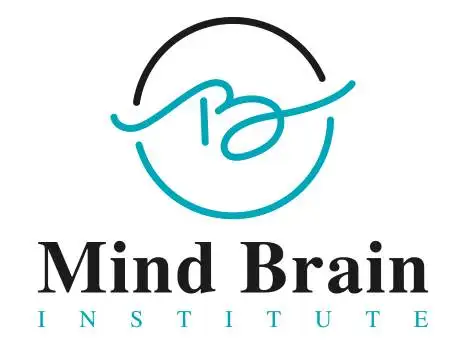
- Posted By MindBrain
- Comments 0
Ketamine: A revival of the dark story of the brain default mode network in 2024
The web of networks in the human brain controls everything right from the basic motor function to intricate thoughts and emotions. This buzz has not only been about how the regions of networks interact with each other, but also what particular nodes are doing — in some ‘resting state’ brain images, people began to notice that a network called Default Mode Network (DMN) was clearly visible and it’s activity was linked to self-referential thinking as well as depressive mood.
There are certainly a few depression and anxiety treatments other than depression/anxiety therapy that can be beneficial for you. Curiously, an anesthetic drug called ketamine, has recently become a source of hope for changing the negative loop generated by the Default Mode Network.
What You Need to Know About the Default Mode Network and Depression/Anxiety Therapy
The Default Mode Network is a functionally connected group of brain regions that all deactivate during rest and when classes include minimal attention to sensory input. It’s involved in 2 behaviors, namely:
Implicit mentalizing: autobiographical processing.
Self: thinking about oneself, daydreaming and memory recollection.
Task-unrelated thought: Mind wandering or daydreaming.
Affective Processing is the modulation of specific emotions, as well as the experience and understanding of emotions in self or other. While the Default Mode Network is essential for healthy cognitive function, imbalances in this network or overactivity thereof are connected to Rumination, Criticism and Depression mode. Let’s dive into each of these behavioral symptoms.
Rumination (Impact): Excessive passive process that focuses inward on distress.
Criticism: Keeping a negative view on themselves.
Depression: There is a common finding of increased activity in the Default Mode Network with individuals experiencing depressive disorders.
Default Mode Network — The Bad Story
For any cure techniques, there may be some setbacks. This is one more example of how in depression, the Default Mode Network can easily turn into a hub for ruminative (pensive) thought processes. You might get into these endless loops of self-criticism, despair and hopelessness. This discouraging monologue not only breeds depressive symptoms but can also render conventional treatment regimens like depression & anxiety therapy less effective. The first step to cure this is to get help from a professional therapist for anxiety/depression who can help you come out of this.
3 Key Points to consider:
Hyper Connectivity: More communication between regions of the Default Mode Network is equal to more volume in negative thoughts. You might have uneasy thoughts like, ” I am fine but nobody can help me”, “I’m okay”, “Do I need to go to a therapist for anxiety or not” and such thoughts.
Impaired Cognitive Control: Difficulty shifting attention away from negative stimuli. Stimuli means the events or things which can provoke a reaction in your system or organism. Stimuli can come from both external (environment and situations) or internal (within your body) ways.
Emotional Bias: The points of view that are not in their favor. It’s all about prejudiced instinct. Emotional bias might mislead one’s perception and lead them to view their circumstances as per their preconceived feeling than the actual facts. This makes way for negative thoughts, negative self-beliefs and such assumptions in one’s mind.
How Ketamine Works:
Ketamine acts on NMDA Receptors (N-Methyl-D-Aspartate): Ketamine is an antagonist against the stronger functioning of these receptors preventing and reducing glutamate levels.
It supports synaptogenesis* to bolster the production of new synaptic connections, improving neural plasticity.
It also brings about changes in brain networks by influencing different neural networks such as the Default Mode Network (DMN)
*Synaptogenesis is a process with which new synapses (the connections between neurons) are formed in the brain. This process plays a vital role in one’s memory, development of the brain, learning, and for recovery from any brain injuries.
Ketamine’s Impact on the DMN
Several studies have demonstrated that ketamine is able to selectively impact the Default Mode Network, giving rise to a pharmacological disruption in the typical depressive narrative.
The 3 Mechanisms:
Diminished DMN Activity: Ketamine reduces excessive brain activity in the Default Mode Network (DMN), reducing rumination.
Increased DMN Connectivity with Cognitive Control Networks: Facilitated communication between the DMN and networks important for attention, processing speed, and executive function.
Altered Functional Connectivity: Facilitated coordination between the various regions of the Default Mode Network, promoting more adaptable thought processes.
Clinical Evidence:
Quick Symptom Reduction:
Many of our patients experience a decrease in depressive symptoms within hours after ketamine is given.
Long Lasting Effects:
Alterations in Default Mode Network activity can last for days or even weeks, ensuring continued relief. During this time, the individuals taking help from the therapist for anxiety find themselves switching from bad over exciting, self-endorsing feelings.
Moving the Mental Health Plot Line
The potential of ketamine to recast the negative narrative of the Default Mode Network is immense with regard to mental health care where the patients are provided with ketamine treatment along with a therapist for anxiety and depression.
Most crucial 3 benefits of therapist for anxiety in Default Mode Network:
1. Rapid acting:
Provides relief much faster than conventional clinical depression medication or anti-anxiety and depression medication.
2. Works in Treatment-Resistant Cases:
An entire 1/3 of patients who had not responded to any other treatment were now potentially responding to this new stem cell therapy that also includes help from a therapist for anxiety & depression.
3. Assists Psychotherapy:
The effects may also improve the efficacy of clinical treatments, and other holistic treatments like mindfulness-based therapy sessions.
Considerations during therapist for anxiety sessions:
Professional Medical Assistance Needed: Ketamine treatments need to be performed under close medical supervision.
Potential Side Effects: Dissociation; it should be well managed.
Conclusion
The interaction of ketamine with the Default Mode Network represents a revolutionary new horizon for addressing depression. Ketamine is a way of interfering with these negative narratives your DMN perpetuates, offering you the possibility to heal and recover.
Warning:
This blog post is intended for informational and up to date information purposes only, it should not be considered medical advice. Speak to a medical professional for personalized treatment options


